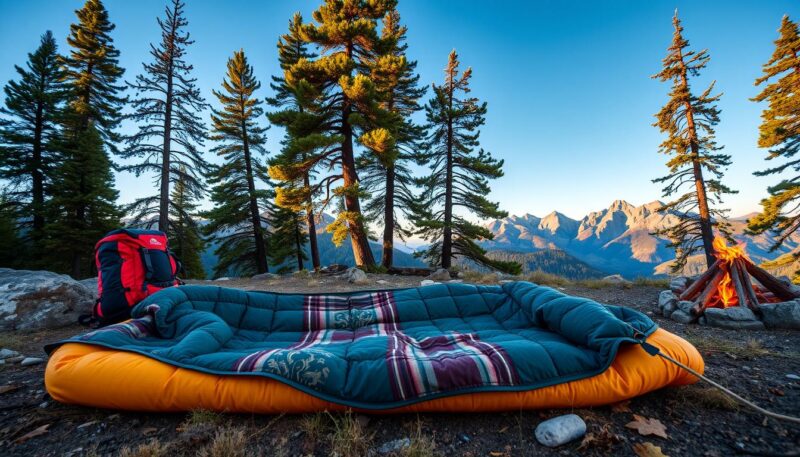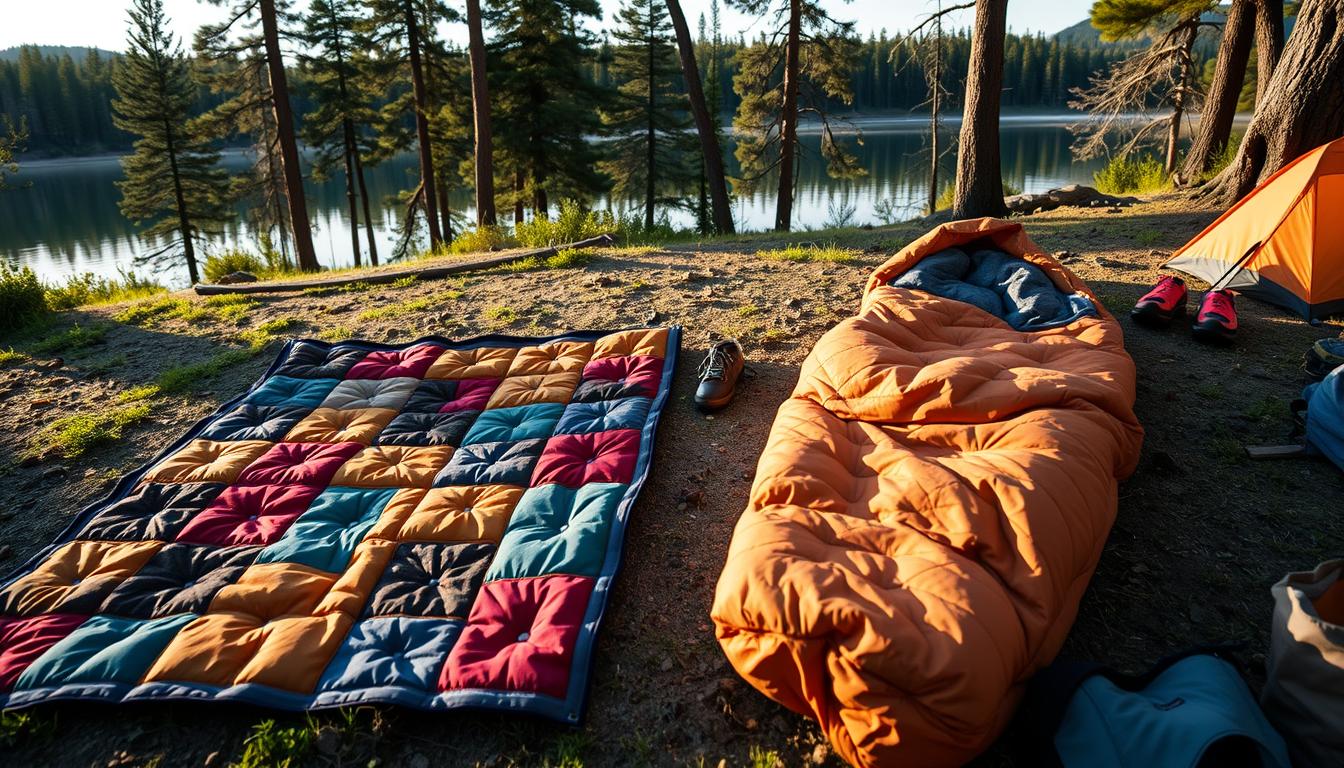When it comes to your outdoor adventures, choosing between a backpacking quilt and a sleeping bag can significantly influence your comfort, weight management, and overall experience in the wild. The right choice can mean the difference between a peaceful night’s sleep under the stars and a restless one. In this article, we will explore the fundamental differences between backpacking quilts and sleeping bags while delving into the pros and cons of each option. Understanding what both sleeping systems offer allows you to make an informed decision tailored to your individual needs and preferences while on the trail.
As you weigh your options, you might consider how each system performs in various conditions and how they align with your hiking style. For instance, averages suggest that switching from sleeping bags to quilts can lead to a significant reduction in weight, perhaps by 10% to 30%, which is especially appealing during long treks. Additionally, many users report feeling more freedom of movement—up to 50% more—when they make the switch. However, you must also bear in mind that sleeping bags tend to provide more reliable insulation, especially valuable in cooler temperatures. This complex interplay of factors—comfort, weight, and temperature regulation—can help guide your decision.
So, whether you’re planning a summer adventure or preparing for a winter expedition, the knowledge gained from understanding the pros and cons of backpacking quilts and sleeping bags will ensure that you select the best option for your journey. Let us dive deeper into each of these sleeping systems, exploring their unique characteristics and functionalities.
Understanding Backpacking Quilts and Sleeping Bags
In the world of backpacking, choosing the right sleeping system is essential for a good night’s rest. You may find yourself weighing options between two popular gear choices: the sleeping quilt and the sleeping bag. Understanding what a sleeping quilt is and what a sleeping bag is, along with the key differences between the two, will help you make an informed decision for your next adventure.
What is a Sleeping Quilt?
A sleeping quilt serves as a minimalist and lightweight alternative to traditional sleeping bags. Typically lacking a back and hood, a sleeping quilt focuses insulation on the top and sides. This design makes it especially appealing for ultralight backpackers aiming to trim unnecessary weight and volume. Many quilts come with attachment systems, allowing you to secure them over a sleeping pad. This feature is vital for minimizing and limiting draughts, ensuring a snug sleeping experience.
What is a Sleeping Bag?
A sleeping bag is a more conventional sleeping system that fully envelops your body, designed to provide maximum warmth and comfort. Usually featuring a zipped closure, a sleeping bag prevents cold air from entering and offers a draft-free experience. The insulation fills the entire bag, making it a reliable choice for various weather conditions. While ultralight models exist, many sleeping bags come with added features such as hoods and draft collars to enhance warmth retention, making the choice between quilt vs sleeping bag comparison noteworthy.
Key Differences Between Quilts and Sleeping Bags
The quilt vs sleeping bag comparison highlights several critical differences:
- Weight: Quilts tend to be lighter, with models like the REI Co-op Magma 30 Down Trail Quilt weighing approximately 1 lb 4.3 oz compared to its sleeping bag counterpart at 1 lb 8.4 oz.
- Packability: Quilts compress more efficiently, allowing for easier packing and carrying on long treks.
- Warmth Retention: Sleeping bags often provide superior warmth retention due to their draft-free design, while quilts may sacrifice some insulation for reduced weight.
- Cost: Generally, quilts are less expensive than sleeping bags of comparable quality, primarily because they use fewer materials.
- Versatility: Some quilts now feature improved designs with neck collars, enhancing warmth without added weight.
Backpacking Quilt vs Sleeping Bag – Pros and Cons of Each
Choosing between a backpacking quilt and a sleeping bag involves weighing various benefits and drawbacks. Both gear options cater to different preferences and conditions. Understanding these aspects will help you make an informed decision that ensures comfort and warmth on your next adventure.
Pros of Backpacking Quilts
Quilts present several advantages for backpackers seeking weight savings and packability. They typically weigh 20-30% less than comparable sleeping bags, representing a significant leap in efficiency, particularly for ultralight backpackers. Compressing smaller than sleeping bags, they mitigate compression damage, maintaining their insulation capabilities. When paired with a quality sleeping pad, quilt warmth can rival that of traditional sleeping bags.
- Lighter weight enhances your pack’s overall load, supporting long treks.
- Easier to pack due to reduced volume, allowing for space-efficient gear arrangement.
- Versatile layering options adapt to varying temperatures, accommodating changing conditions.
- Enhanced freedom of movement due to the quilt design promotes a comfortable sleep position.
Cons of Backpacking Quilts
Despite their advantages, quilts have certain drawbacks. Some users report encountering cold air drafts with narrower designs. Insufficient insulation beneath, due to the absence of material underneath, necessitates a well-insulated sleeping pad for adequate warmth. Quilts may not provide enough protection in extremely low temperatures; individuals venturing into alpine conditions often prefer sleeping bags for maximum warmth retention.
Pros of Sleeping Bags
Sleeping bags come with notable advantages in terms of warmth and insulation. Designed with a closed system, they trap heat effectively, which is essential for colder climates. Traditional sleeping bags often feature lower temperature ratings compared to quilts, suitable for diverse weather conditions. Many options include built-in zippers for temperature regulation, allowing for easy adjustments during use.
- Full-length zippers add versatility for quick temperature adjustments and ease of entry.
- Superior warmth retention in colder environments, making sleeping bags ideal for winter camping.
- Greater variety of designs available cater to specific needs, ensuring comfort during long trips.
- Some brands allow for customization, enhancing user satisfaction with tailored features.
Cons of Sleeping Bags
While beneficial, sleeping bags have their disadvantages as well. The added weight compared to quilts can be a disadvantage for those who prioritize ultralight packing strategies. Many sleeping bags are bulkier, leading to less efficient packing. Additionally, they can restrict movement, which might affect sleep quality for certain users who prefer a freer sleeping position.

| Feature | Quilt Advantages | Sleeping Bag Advantages |
|---|---|---|
| Weight | 20-30% lighter than sleeping bags | Generally heavier |
| Packability | Compresses smaller | Bulkier |
| Warmth | Equal warmth with proper pads | Better heat retention in extreme cold |
| Comfort | Freedom of movement | Structured snug fit |
Conclusion
Deciding between a backpacking quilt and a sleeping bag ultimately comes down to your personal preferences and the specific conditions you encounter on your adventures. Both options have distinct advantages and disadvantages that can impact your outdoor experience. While the best sleep systems for hikers emphasize lightweight and packable gear, the marks of comfort and warmth are undeniable when evaluating quilt vs bag in cold weather. Understanding your needs will significantly guide your choice.
If you prefer freedom of movement and are venturing into milder temperatures, a sleeping quilt may be the ideal solution for you. However, if you often find yourself sleeping in colder conditions, a sleeping bag can offer the protection and insulation you require, especially when choosing a sleeping bag for travel in climates that dip to the 30s and below. Each option brings value to the trail, so assessing your outdoor habits is key.
Ultimately, the decision is yours to make. By weighing the benefits of a quilt against the consistency of a sleeping bag, you’re better equipped to enhance your hiking experience. Whether you’re camping under the stars or taking that next breathtaking trek, the right choice will provide you with countless restful nights in the great outdoors.

